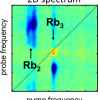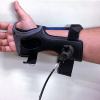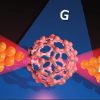Spectroscopy News
The combination of magnetic resonance spectroscopy and functional magnetic resonance imaging have shown that changes in neurotransmitter levels in the visual cortex coincide with brain activity.
A research team from the University of Freiburg’s Institute of Physics has succeeded for the first time in applying 2D-spectroscopy to isolated molecular systems and thus in tracing the interactive processes at a molecular level more precisely.
Researchers have developed a new mass spectrometry technique to analyse cell membrane proteins in situ which could revolutionise the way in which we study diseases, such as cancer, metabolic and heart diseases.
Markes International’s success in exporting scientific instrumentation has been rewarded with an accolade from the UK’s Department for International Trade (DIT).
BASF hopes that an infrared sensor developed by a spin-off company will be integrated into smartphones by 2022 and provide NIR analysis of food by consumers.
“Ghost” spectroscopy reveals no ghosts, but is real-world spectroscopy with classical correlated photons in the spirit of quantum sensing.
A new, freely available machine learning program combined with NMR spectroscopy to determine the exact location of atoms in complex organic compounds.
The winner of this award from the UK’s Infrared and Raman Discussion Group is John Chalmers, who was Article Editor for Spectroscopy Europe for many years.
An arthroscopic near infrared spectroscopic probe for evaluation of articular cartilage and subchondral bone structure and composition could improve early detection of cartilage lesions.
Stemmer Imaging has expanded its portfolio and acquired a stake in Perception Park GmbH, the Austrian provider of the Perception System & Studio data processing platform.
Tornado’s Raman spectroscopy system has won in the category, “Excellence in Pharma: Analysis, Testing, and Quality Control”.
Research has shown that Raman spectroscopy predicted glucose values as accurately as a finger prick test.
Outdoor bronze statues suffer from corrosion by the urban atmosphere. Short wavelength infrared hyperspectral imaging can determine the spatial distribution of corrosion products on the statue, none of which can be recognised by visual observation.
New database enables the rapid screening and identification of drugs by Direct Analysis in Real Time (DART®) mass spectrometry.
Keynote speakers have been announced for HSI 2018, the 7th international conference on Hyperspectral Imaging & Applications, co-located with Photonex Europe taking place on 10 and 11 October at the Ricoh Arena, Coventry, UK.
Hyperspectral imaging can detect weak from strong hardened concrete and normally fired bricks.
Machine learning techniques using a combination of the layer clustering and decision tree methods aids prediction of spectra.
PhD students worldwide who have defended their thesis in the last two years are invited to apply for this award.
Shimadzu’s IRSpirit and AIM-9000 have been chosen from over 6300 items from 59 countries as winners of Red Dot Awards.
The use of a single-molecule transistor enables terahertz spectroscopy to overcome the diffraction limit.

















